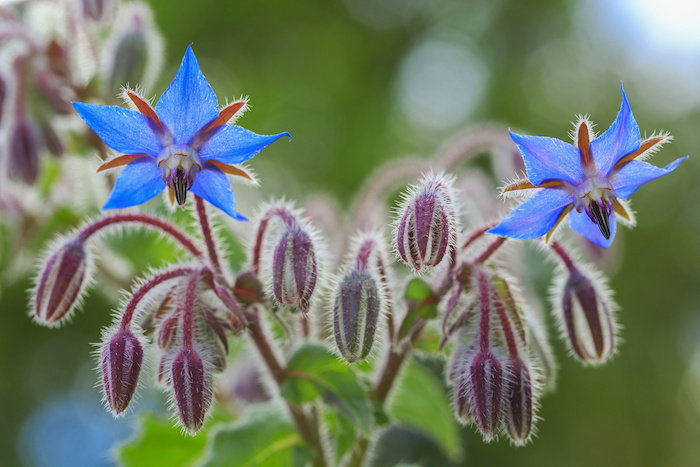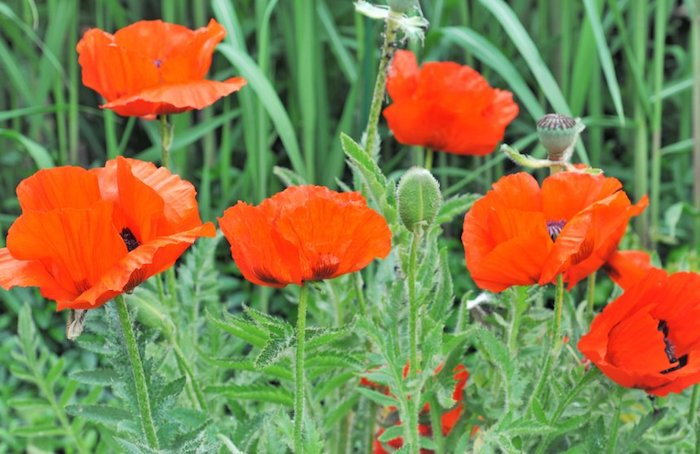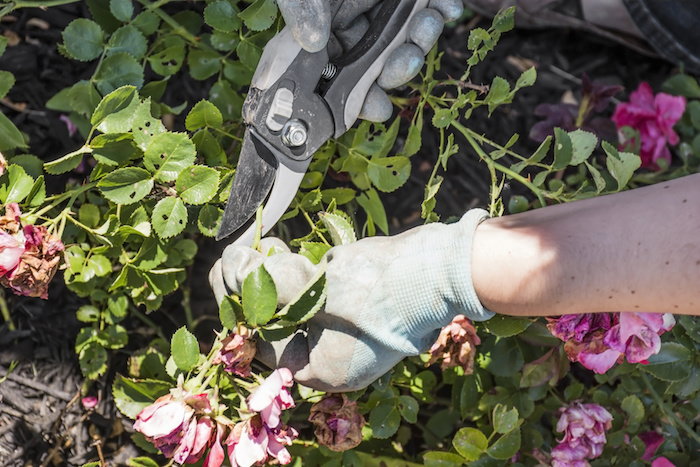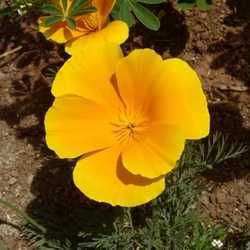Gardeners may love toiling away in the dirt, but shortcuts are always appreciated during the busy planting season. Although most annuals will reseed by themselves, some are more aggressive about sending out volunteers than others (depending on soil conditions, temperature, and precipitation). Seeds from these plants will spread far and wide and fill in all your garden's empty spaces. By letting these aggressive annuals reseed in your garden, you’ll save time on planting next year and get to enjoy some gorgeous blooms all season long.
Easy Self-Sowing Annuals

Borage (Latin name: Borago officinalis), also known as starflower, is an herb that grows to about three feet tall and produces bright blue flowers. A natural companion plant of spinach, legumes, brassicas, tomatoes, and strawberries, borage will readily spread throughout the garden and only ever need to be planted once. It grows well even in the poorest soil. Plus, its blue flowers are completely edible: sprinkle them in salads or freeze them in ice cubes to give your drinks a cucumber flavor.
Love-in-a-Mist, or nigella, is part of the Ranunculaceae family and is defined by its delicate fern-like foliage and colorful flowers, which bloom in pastel shades of pink, purple, blue, yellow, and white. Nigella plants produce round pods that spread seeds upon opening. These pods can also be dried and used to make potpourri, bouquets, or other floral crafts.

Calendula (Latin name: Calendula offinalis), also known as pot marigold, is another edible herb that adds color to salads and is often used in place of saffron. Calendula can also be used to holistically treat cuts, burns, and other skin ailments. These plants produce tan-colored seeds that drop from the flower after they’ve bloomed and dried on the stalk. If exposed to the right conditions, calendula has the potential to take over your entire flower bed. If you don’t want it to spread too far, be sure to deadhead its flowers after they’ve bloomed.
Poppies are part of the Papaveraeae family, which is made up of both annual and perennial plants. Two varieties that are great for filling empty garden spaces are the Flanders or corn poppy (Latin name: Papaver rhoeas), and the California poppy (Latin name: Eschschlolzia californica). Flanders poppies are bright red with a black-and-white center and are commonly used as a symbol of remembrance for soldiers who died during World War I. You’ll often see people wearing poppy pins on Remembrance Day in the United Kingdom, Canada, Australia, and New Zealand.
California poppies are California's official state flower and can be found growing along its many highways. These plants feature bright orange flowers and fern-like foliage. Once you plant them, you’ll find them popping up all across your lawn and garden beds. If they’re a nuisance, simply pull them out of the ground. However, California poppies are an excellent source of pollen for bees, so try to keep at least a few around if you can.
Garden nasturtium (Latin name: Tropaeolum majus) will grow anywhere and everywhere, even in poor soil. Nasturtium is an ideal companion plant for brassicas and other vegetables and can be used to spice up your salad recipes. These plants will readily self-sow and drop their small, round, bumpy seeds as soon as they're done flowering. If you’d like to control where they grow, collect the seeds as soon as you see them.
Tips for Growing Self-Sowing Annuals

If you’d like to incorporate more self-sowing annuals in your garden, there are a few things you should keep in mind. Choose open-pollinated or heirloom varieties, which are more likely to reseed. Plus, these varieties will continue to produce the same quality flowers each and every year.
To get your flowers to self-sow in place, refrain from deadheading them until after they've finished blooming. Let the flower heads go to seed and the seeds fall into the soil. Remember that this may cause them to spread throughout your garden and lawn. If that happens, just uproot the unwanted sprouts as they start to appear.
If you want to collect the seeds and plant them elsewhere in the garden, you’ll go through a similar process. Let the flower heads go to seed, but capture the seed heads before they fall. For example, if you want to save calendula seeds, you'll want to cut off the flower heads and bring them inside to dry on a screen or wax paper as soon as their petals have fallen off.
Keeping Annuals from Taking Over the Garden

The easiest way to keep self-sowing annuals from taking over the garden is to deadhead spent flowers. If you deadhead them, you’ll help prevent the seeds from spreading. Both calendula and nasturtiums have seeds that are large enough to pick up if you see them on the ground where you don’t want them. For all plants, pull the starts when you see them in places they shouldn’t be.

















